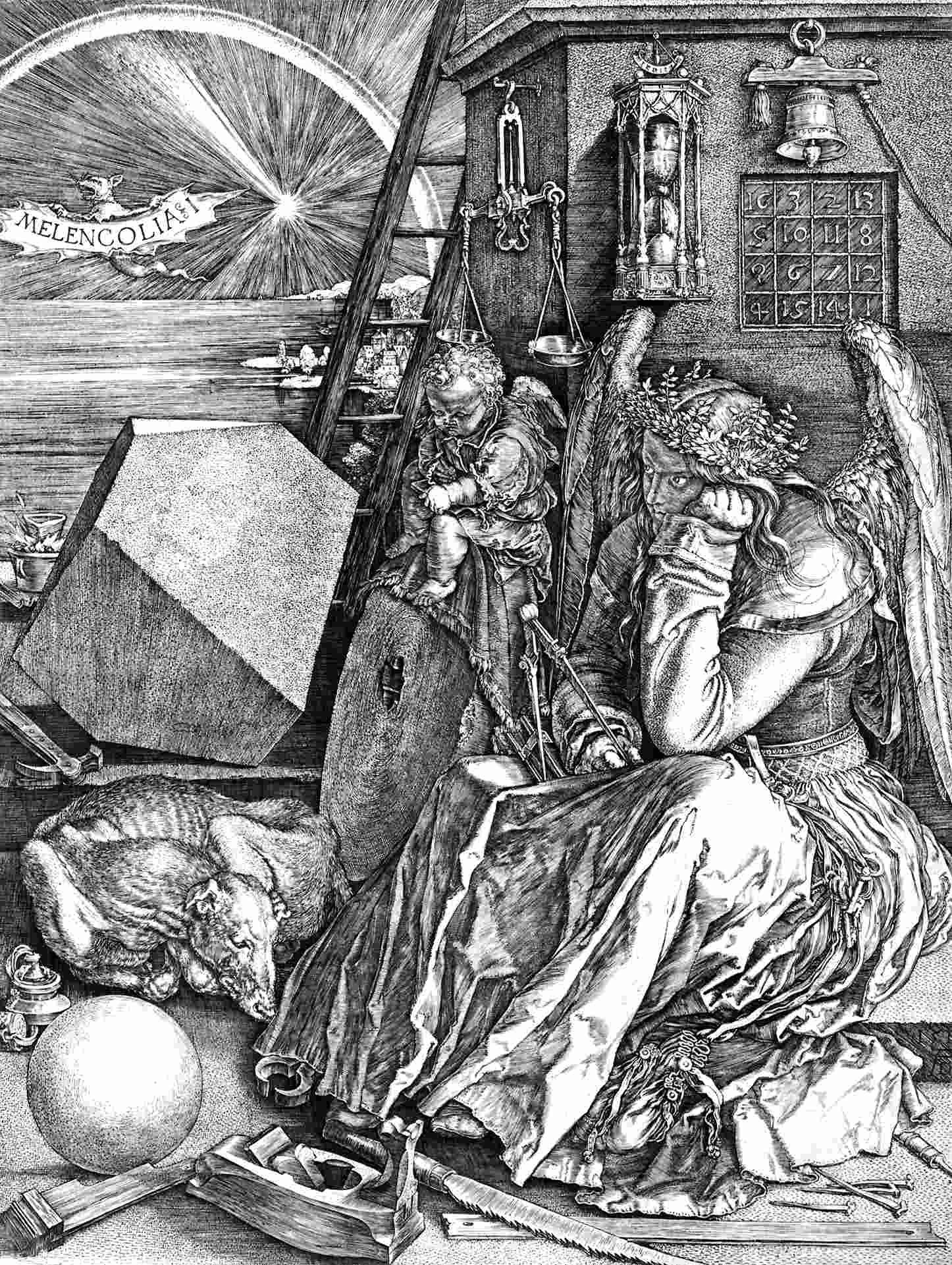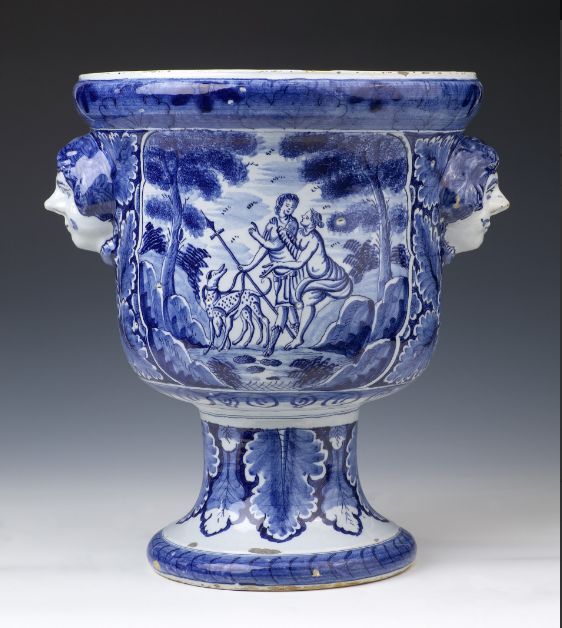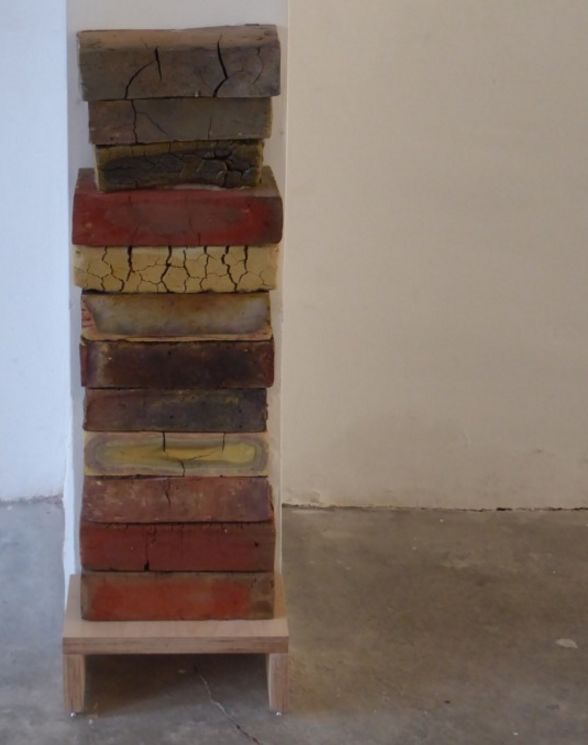Happy New Year: Transformation in Art
With all the festivities of the past month behind us, we welcome the new year of 2017. Setting up a list of resolutions, contemplating on the previous year: many people appreciate the transition of years as a new perspective. The interest in this transformative process seems to come natural to mankind and the examination of it has been practiced by many philosophers, scientists and artists throughout the years. How do we see the process of transformation in art?
Melencholia I, by Albrecht Dürer (1471 -1528), 1514.
Alchemy and the Transformative Process
Firstly, we will examine an engraving by Albrecht Dürer (1471-1528), a painter and printmaker of German descent. It is a famous, allegorical depiction of Melancholy, or a depressive state of being. An empty scale as a representation of imbalance and a hourglass as a reference to time running out are indications of this. However, this is only part of one of many interpretations concerning this engraving. More recent studies indicate that Dürer - and Lucas Cranach as his famous contemporary alike - was influenced to some extent by alchemical ideas and symbolism.
Long shrouded in secrecy, alchemy is now recognised as the ancestor of modern chemistry; it is commonly thought a practicing alchemist's focus lay on the producing synthetic gold. Their goals however, were far more ambitious: to transform nature to the will of human imagination. In Dürer's engraving, the process of transformation can be found fully on display. A seven-runged ladder and a rainbow of seven colours are perhaps referring to the most important metals, the operations of alchemy and the associated heavenly bodies. Several geometric symbols in combination with natural elements as fire, are indications of an alchemist's perspective on reality. In essence, the depiction is a representation of how the world's processes and all life in and around earth share an inseperable bond that may be unveiled through the practice of alchemy; the old year transforming into the new being one of them.
Dutch Delftware urn-shaped Jardinière depicting Venus and Adonis, not signed. Ca. 1735. The vase can be found at Kollenburg Antiquairs.
Ovid's Metamorphoses
When examining transformation in art, it is impossible to overlook the Books of Transformations, or the Metamorphoses by Roman Poet Ovid. His work chronicles the history of the world through fifteen books and over 250 myths. Transformation is a unifying theme amongst the different episodes and Ovid raises its significance in the opening lines: In nova fert animus mutatas dicere formas / corpora; "I intend to speak of formes changed into new entities." And indeed, the stories concern Gods tranfsorming into mortals, mortals transforming into Gods and Gods and mortals transforming into nature. The works have been one of the most influential of Western culture and inspired authors as Dante, Shakespeare, and Chaucer. The appeal of the particular subject of transformation, as in episodes of misfortune and the inevetible progress these bring, becomes evident though their influence in the arts, especially during the Renaissance when mythological subjects were favoured.
One example of this is Dutch Delftware urn-shaped Jardinière. The vase is decorated with blue oak leaves and two depicted scenes in the cartouches; one of them concerning Venus and Adonis, accompanied by two dogs. The subject of Venus and Adonis can be found in Book X, and has a complex motivation. It is generally looked at as a love story to end all love stories, all figures involved end up being doomed by their obsessions. Apart from this, it does contain a number of transformations: Adonis's mother Myrrha turns into a tree to escape a father's anger. Adonis is then born from this tree and after a tumultuous life of love and tragedy, he is killed. Godess Venus turns his last blood into a flower, an anemone.
Bodemstalen, by Anne Ausloos and Jeroen van Westen. This work can be found at Galerie de Witte Voet.
Fired Clay
The work shown above is currently on display at Galerie de Witte Voet in Amsterdam. Interestingly, it can be seen as a pure embodiment of transformation. To realise this artwork, Anne Ausloos and Jeroen van Westen have taken a scientific approach on nature's natural processes by taking clay from different grounds and fireing them together in one oven. The results are stacked on top of one another, to bring one's attention to the meaning of the comparative aspect of this work. The focus therefore lies on transformation and it outcomes, making it a perfect, contemporary reminder of the change of the old year into the new one. Here's to the most positive outcome possible this change will bring us!
For more curated fine art also have a look at Gallerease!




